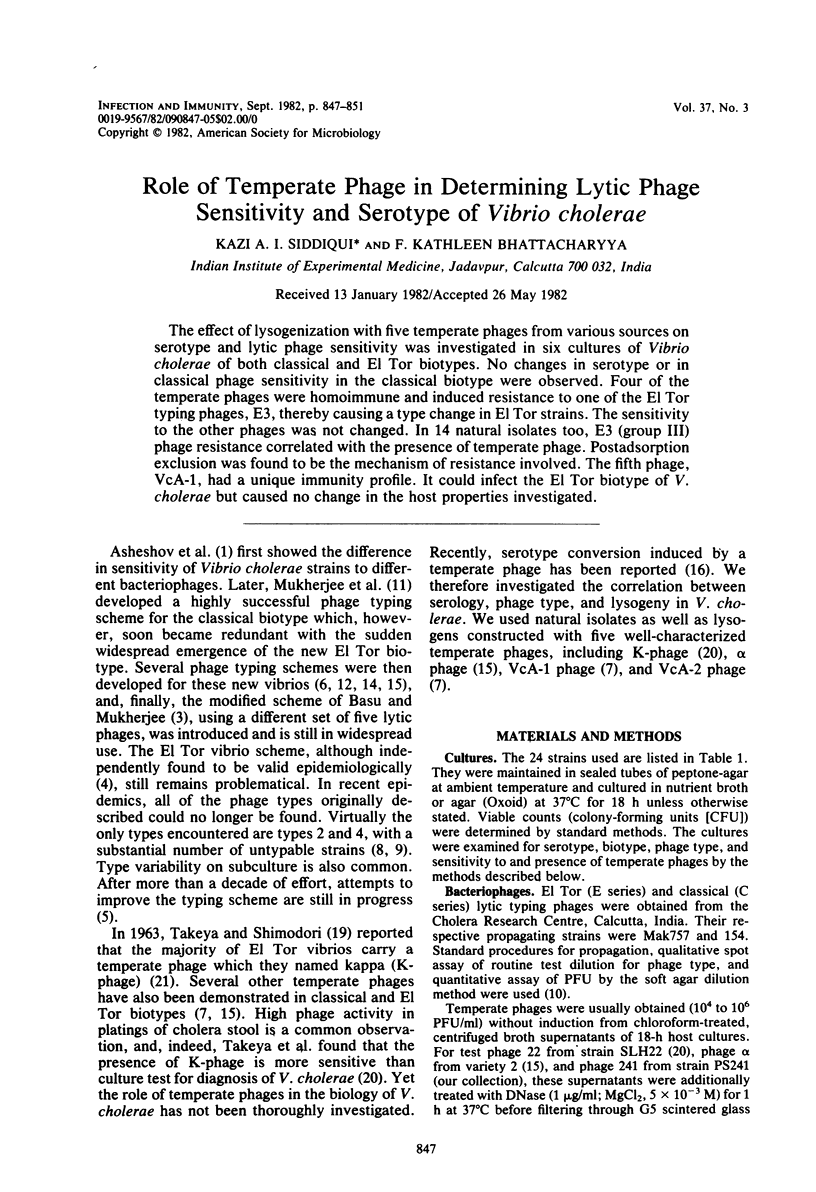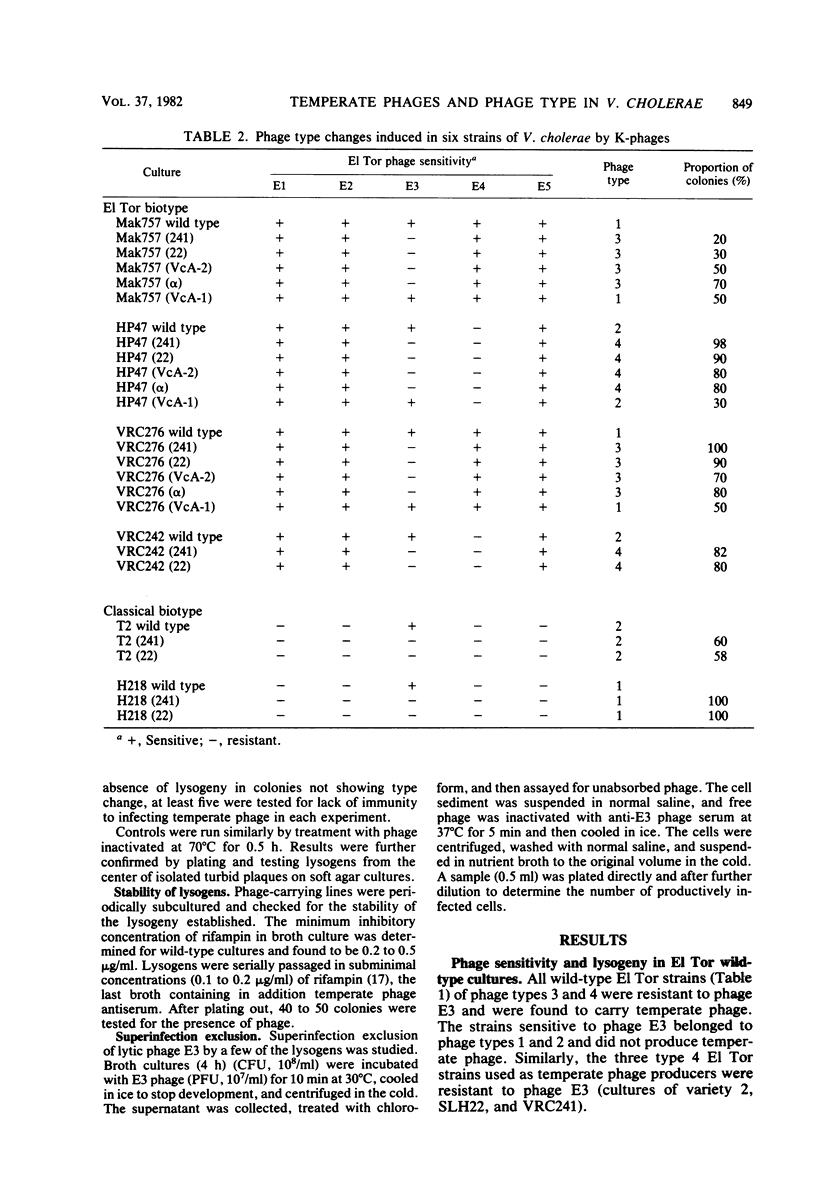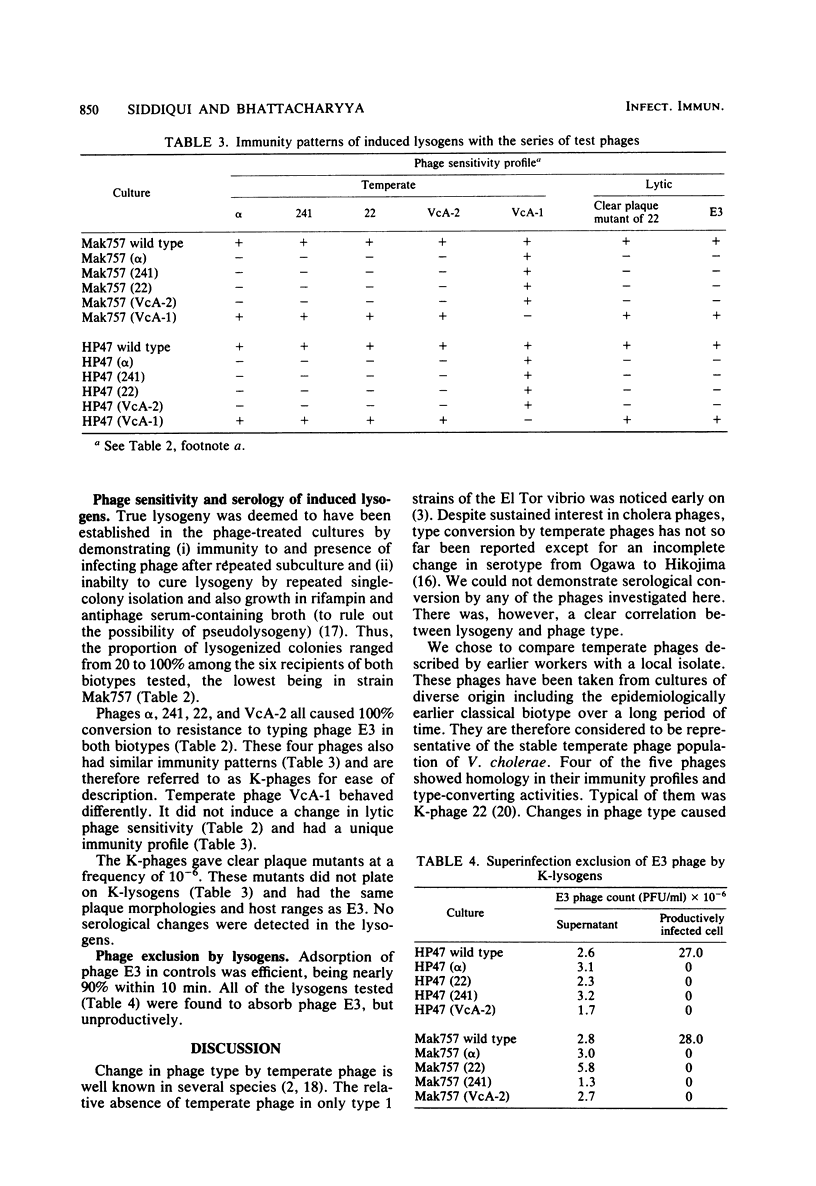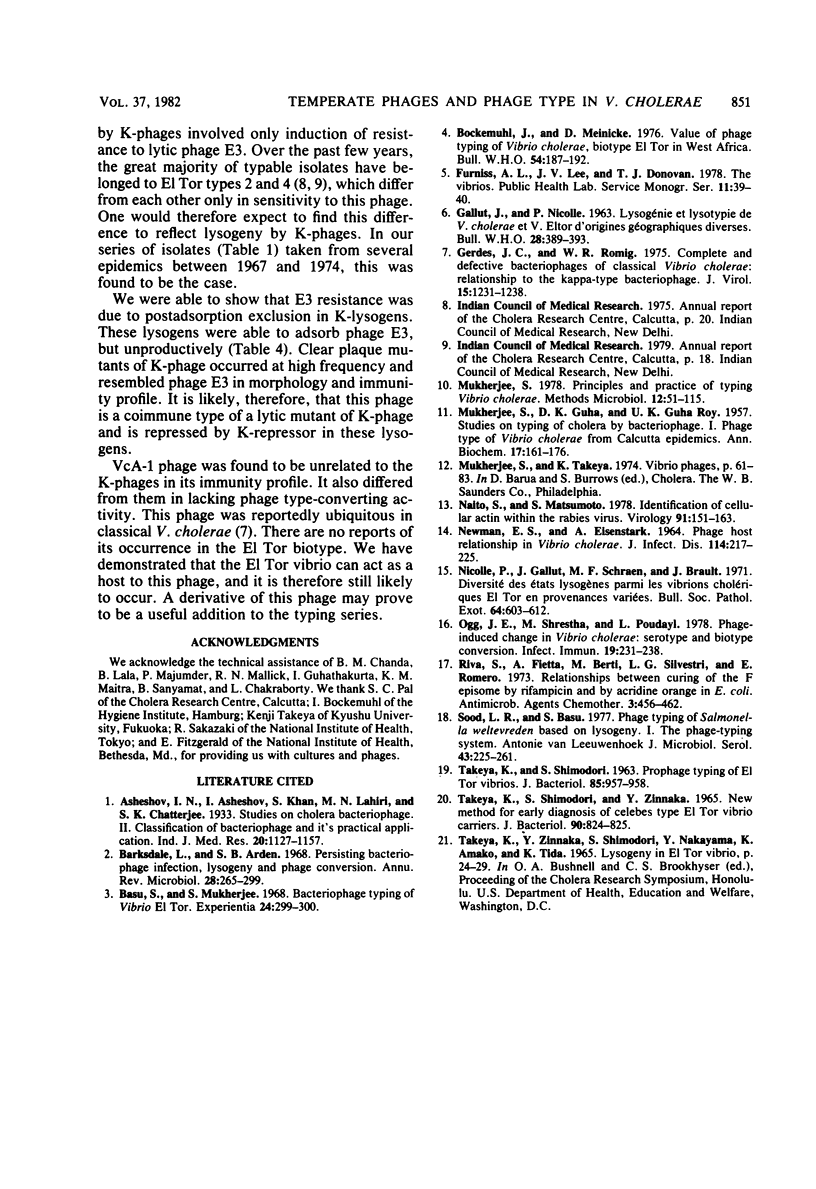Abstract
The effect of lysogenization with five temperate phages from various sources on serotype and lytic phage sensitivity was investigated in six cultures of Vibrio cholerae of both classical and El Tor biotypes. No changes in serotype or in classical phage sensitivity in the classical biotype were observed. Four of the temperate phages were homoimmune and induced resistance to one of the El Tor typing phages, E3, thereby causing a type change in El Tor strains. The sensitivity to the other phages was not changed. In 14 natural isolates too, E3 (group III) phage resistance correlated with the presence of temperate phage. Postadsorption exclusion was found to be the mechanism of resistance involved. The fifth phage, VcA-1, had a unique immunity profile. It could infect the El Tor biotype of V. cholerae but caused no change in the host properties investigated.
Full text
PDF




Selected References
These references are in PubMed. This may not be the complete list of references from this article.
- Barksdale L., Arden S. B. Persisting bacteriophage infections, lysogeny, and phage conversions. Annu Rev Microbiol. 1974;28(0):265–299. doi: 10.1146/annurev.mi.28.100174.001405. [DOI] [PubMed] [Google Scholar]
- Basu S., Mukerjee S. Bacteriophage typing of Vibrio eltor. Experientia. 1968 Mar 15;24(3):299–300. doi: 10.1007/BF02152832. [DOI] [PubMed] [Google Scholar]
- Bockemühl J., Meinicke D. Value of phage typing of Vibrio cholerae biotype eltor in West Africa. Bull World Health Organ. 1976;54(2):187–192. [PMC free article] [PubMed] [Google Scholar]
- Gerdes J. C., Romig W. R. Complete and Defective Bacteriophages of Classical Vibrio cholerae: Relationship to the Kappa Type Bacteriophage. J Virol. 1975 May;15(5):1231–1238. doi: 10.1128/jvi.15.5.1231-1238.1975. [DOI] [PMC free article] [PubMed] [Google Scholar]
- NEWMAN F. S., EISENSTARK A. PHAGE-HOST RELATIONSHIPS IN VIBRIO CHOLERAE. J Infect Dis. 1964 Jun;114:217–225. doi: 10.1093/infdis/114.3.217. [DOI] [PubMed] [Google Scholar]
- Naito S., Matsumoto S. Identification of cellular actin within the rabies virus. Virology. 1978 Nov;91(1):151–163. doi: 10.1016/0042-6822(78)90363-x. [DOI] [PubMed] [Google Scholar]
- Nicolle P., Gallut J., Schraen M. F., Brault J. Diversité des états lysogènes parmi les vibrions cholériques El Tor de provenances variées. Bull Soc Pathol Exot Filiales. 1971 Sep-Oct;64(5):603–612. [PubMed] [Google Scholar]
- Ogg J. E., Shrestha M. B., Poudayl L. Phage-induced changes in Vibrio cholerae: serotype and biotype conversions. Infect Immun. 1978 Jan;19(1):231–238. doi: 10.1128/iai.19.1.231-238.1978. [DOI] [PMC free article] [PubMed] [Google Scholar]
- Riva S., Fietta A., Berti M., Silvestri L. G., Romero E. Relationships between curing of the F episome by rifampin and by acridine orange in Escherichia coli. Antimicrob Agents Chemother. 1973 Apr;3(4):456–462. doi: 10.1128/aac.3.4.456. [DOI] [PMC free article] [PubMed] [Google Scholar]
- Sood L. R., Basu S. Phage-typing of Salmonella weltevreden based on lysogeny. I. The phage-typing system. Antonie Van Leeuwenhoek. 1977;43(3-4):255–261. doi: 10.1007/BF02313753. [DOI] [PubMed] [Google Scholar]
- TAKEYA K., SHIMODORI S. "PROPHAGE-TYPING" OF EL TOR VIBRIOS. J Bacteriol. 1963 Apr;85:957–958. doi: 10.1128/jb.85.4.957-958.1963. [DOI] [PMC free article] [PubMed] [Google Scholar]
- Takeya K., Shimodori S., Zinnaka Y. New Method for Early Diagnosis of Celebes Type El Tor Vibrio Carriers. J Bacteriol. 1965 Sep;90(3):824–825. doi: 10.1128/jb.90.3.824-825.1965. [DOI] [PMC free article] [PubMed] [Google Scholar]


